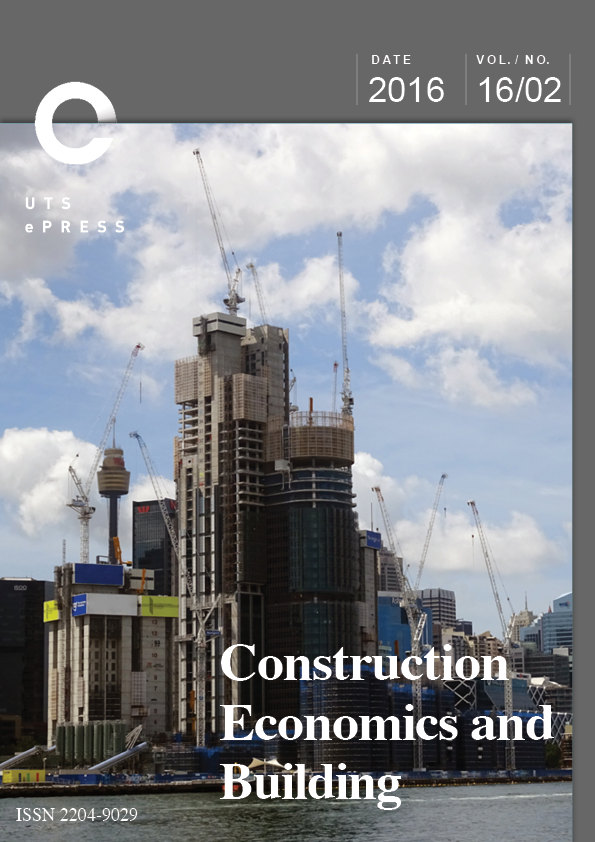Exploring the beliefs of Australian prefabricated house builders
Main Article Content
Abstract
The housing sector accounts for a majority of newly constructed buildings. Prefabrication, defined as the factory construction of houses or significant components, is widely promoted as a means to improve efficiency. This paper focuses on the research questions: RQ1. What are the attitudes of builders towards prefabrication adoption? RQ2. What types of stakeholders do builders believe influence their adoption decisions? RQ3. What types of contextual influences do builders believe impact their adoption decisions? Current prefabrication research has focused on the advantages and disadvantages of prefabrication, without further unpacking the beliefs of stakeholders that underpin them. This paper addresses this gap and increases the understanding of beliefs that can frame interventions to increase the market penetration of prefabrication. Fourteen interviews with Australian prefabricators were undertaken as a Belief Elicitation Study. This qualitative methodology is framed by the Theory of Planned Behaviour (TPB) and the Technology Acceptance Model (TAM). Results show that modern high-quality prefabricated housing has struggled to overcome historical stigma; improved construction speed has not and is not likely to translate to reduced totals costs for a majority of firms; and prefabrication adoption has been hindered by an almost completely unsupportive industry infrastructure. Recommendations are made to frame arguments in improving short-term outcomes for an industry driven by practical considerations. Future discourse must focus on cost impacts, financial security and risk reduction. Establishing networks of prefabricators that can build a strong, unified voice for the industry should be prioritised.
Article Details
Section
Authors who publish with this journal agree to the following terms:
a) Authors retain copyright and grant the journal right of first publication with the work simultaneously licensed under a Creative Commons Attribution License that allows others to share and adapt the work with an acknowledgement of the work's authorship and initial publication in this journal.
b) Authors are able to enter into separate, additional contractual arrangements for the non-exclusive distribution of the journal's published version of the work (e.g., post it to an institutional repository or publish it in a book), with an acknowledgement of its initial publication in this journal.
c) Authors are permitted and encouraged to post their work online (e.g., in institutional repositories or on their website) prior to and during the submission process, as it can lead to productive exchanges, as well as earlier and greater citation of published work (See The Open Access Citation Advantage Service). Where authors include such a work in an institutional repository or on their website (ie. a copy of a work which has been published in a UTS ePRESS journal, or a pre-print or post-print version of that work), we request that they include a statement that acknowledges the UTS ePRESS publication including the name of the journal, the volume number and a web-link to the journal item.
d) Authors should be aware that the Creative Commons Attribution (CC-BY) License permits readers to share (copy and redistribute the work in any medium or format) and adapt (remix, transform, and build upon the work) for any purpose, even commercially, provided they also give appropriate credit to the work, provide a link to the license, and indicate if changes were made. They may do these things in any reasonable manner, but not in any way that suggests you or your publisher endorses their use.
